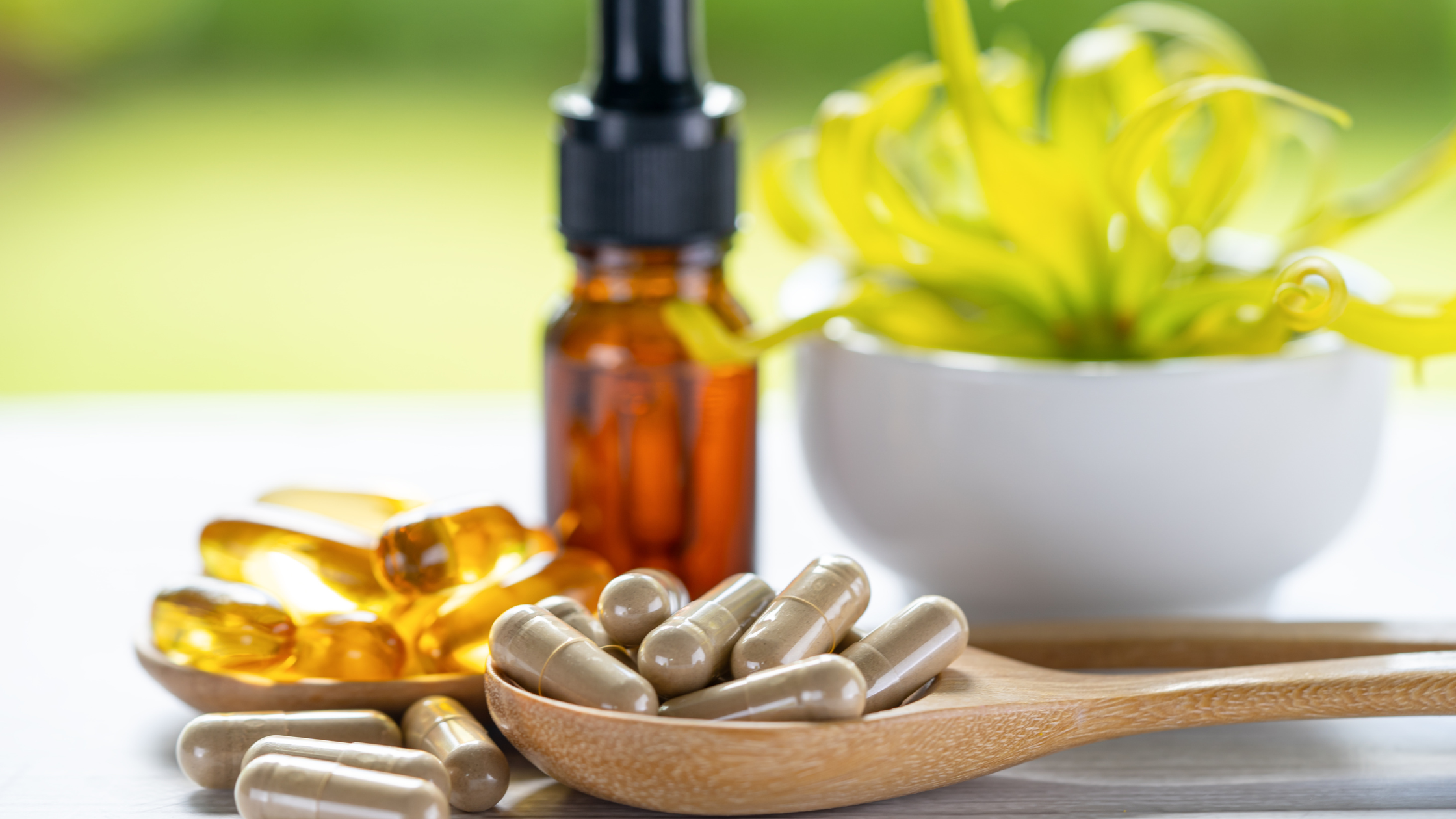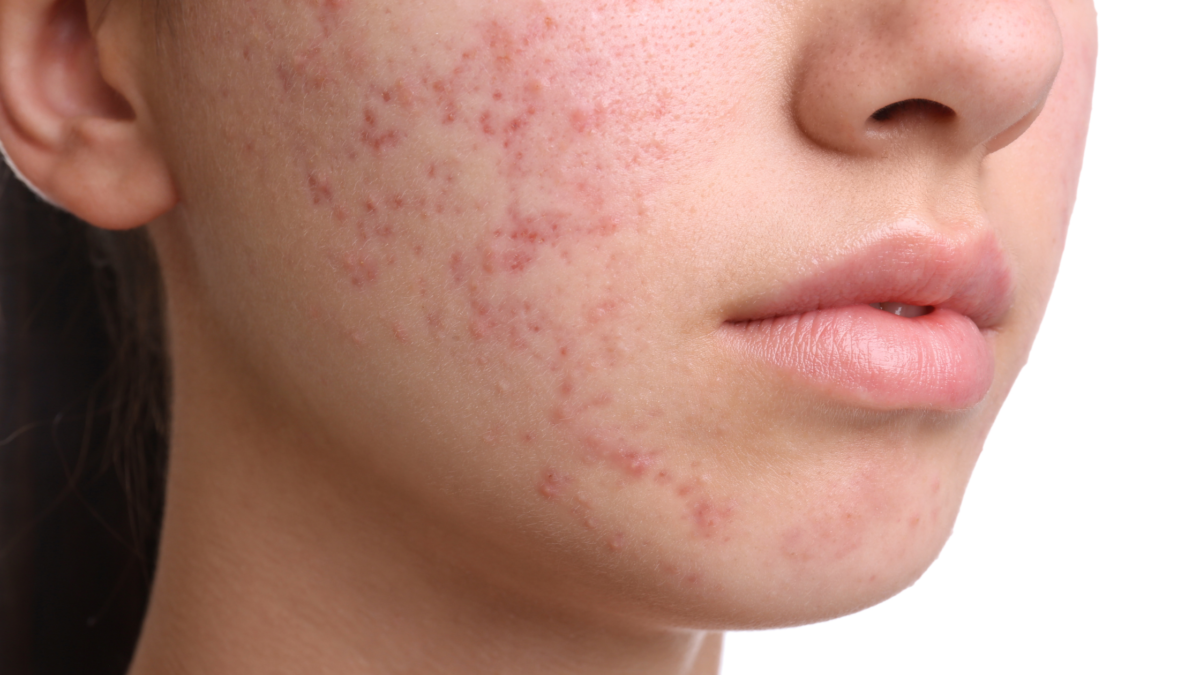


Medically Reviewed By Margaret Etudo. Written By The Vitamins For Woman Team.
Think your skincare routine is enough? Your plate may be the missing piece of the puzzle. Certain foods may be silently fueling your breakouts without you even knowing it.

Acne is more than a cosmetic concern; it’s an inflammatory skin condition affecting millions worldwide.
Acne can be stubborn and deeply frustrating whether you’re in your teens, 20s, or even well into adulthood.
While skincare routines, stress levels, and hormonal fluctuations all play a role, there’s one factor often overlooked by those struggling with acne: diet.
Certain foods can increase inflammation, spike insulin, and affect hormone levels in ways that clog pores, increase oil production, and irritate the skin.
In contrast, other foods support your skin’s natural barrier, reduce sebum, and fight acne at its source.
This blog post dives deep into the connection between food and breakouts. We’ll examine how your diet interacts with hormones and inflammation and guide you through the best dietary swaps for clear, glowing skin foods that help soothe your skin rather than inflame it.
Acne is rooted in inflammation and hormonal imbalance; your foods directly affect both.
Acne is not caused by poor hygiene. It is, at its core, a hormonal and inflammatory condition. Both of these factors can be significantly affected by diet.
Certain foods, especially those high in sugar and refined carbohydrates, increase the body’s insulin levels.
This triggers a cascade of hormonal reactions, including insulin-like growth factor 1 (IGF-1), which increases sebum (oil) production and leads to the overgrowth of skin cells.
Excess sebum and dead skin cells clog pores and provide a perfect environment for acne-causing bacteria (like Cutibacterium acnes) to flourish.
Inflammation also plays a pivotal role. When the body constantly processes inflammatory foods such as processed meats, refined sugars, and trans fats, it’s more likely to respond to systemic inflammation.
This weakens the skin’s natural barrier, delays healing, and makes the skin more reactive and prone to breakouts.
Numerous studies have supported the relationship between dairy and acne; the study shows a consistent link between dairy consumption and an increased risk of acne, especially among adolescents and young adults. Notably, both skim and whole milk were associated with higher acne prevalence.
Why does dairy seem to trigger breakouts? First, dairy contains bovine hormones; even organic milk from hormone-free cows naturally contains bioactive molecules that mimic human hormones.
These compounds can disrupt the endocrine system and elevate IGF-1 levels, which, as mentioned earlier, stimulates sebum production and increases skin cell turnover.
Second, when combined, milk can exacerbate inflammation and may increase sensitivity to other acne-triggering foods.
While the reaction to dairy may vary by individual, many people with persistent acne see noticeable improvements when they reduce or eliminate milk, cheese, and ice cream from their diets.
Some of your favourite snacks may secretly fuel inflammation and clogged pores. Here are the worst offenders that could be sabotaging your skin.
Dairy remains one of the most common dietary culprits behind stubborn acne. From hormonal content to its inflammatory properties, milk and dairy products like cheese and ice cream can significantly disrupt skin health. Skim milk, particularly, is linked to higher acne rates due to its concentrated hormone content.
Refined carbohydrates such as white bread, pastries, and sugary snacks quickly spike blood sugar and insulin levels. These spikes can over-stimulate oil glands and worsen breakouts. Research consistently shows that low-glycemic diets lead to fewer and less severe acne flare-ups.
Sugary drinks are liquid sugar bombs. They flood the bloodstream with glucose, triggering insulin spikes and encouraging hormonal fluctuations that feed acne. Soda, sports drinks, and flavoured teas are also acidic and dehydrating, impairing skin healing and resilience.
Fast food meals often combine acne-triggering ingredients: refined carbs, processed fats, and dairy. Burgers with cheese, deep-fried fries, and sugary sauces contribute to inflammation and hormonal imbalance. Regular fast food consumption is associated with more severe acne and slower skin recovery times.
While cocoa isn’t the villain, milk chocolate is loaded with dairy and sugar, two primary acne instigators. Studies suggest milk chocolate may worsen breakouts, especially in those already prone to acne.
Popular among fitness enthusiasts, whey protein is derived from milk and linked to increased acne flare-ups. It elevates IGF-1 and insulin levels, both of which stimulate oil production. Many athletes find their skin clears when they switch to plant-based protein powders like pea or hemp.
White rice, pasta, and other refined grains act like sugar in the body. They quickly convert to glucose, spike insulin, and promote inflammation. These foods also lack fibre, which plays a key role in balancing hormones and supporting a healthy gut, both essential for clear skin.
Processed meats are highly inflammatory and loaded with preservatives, sodium, and unhealthy fats. They offer no skin-friendly nutrients and are often consumed with refined carbs (like hot dog buns), doubling their acne-triggering potential.
Greasy foods are often cooked in cheap vegetable oils high in omega-6 fatty acids. These fats promote inflammation when consumed in excess and disrupt the delicate balance your skin needs to stay calm and breakout-free. Greasy foods often contain dairy and refined carbs, a perfect storm for acne.
Alcohol doesn’t just dehydrate your skin; it can impair your liver’s ability to flush out toxins, causing them to be expelled through the skin. Mixed drinks also include sugary mixers, which compound the hormonal chaos and can lead to pimples, especially along the jawline and forehead.
Spicy meals may not cause acne for everyone, but they can irritate the digestive system and dilate blood vessels. This can result in facial redness, inflammation, and breakouts, particularly in people with rosacea or sensitive, acne-prone skin.
Artificial sweeteners, flavourings, and dyes disrupt the gut microbiome and burden the liver. These effects may not be immediately visible but can worsen chronic skin issues like acne over time. Sticking to whole, unprocessed foods is key for maintaining healthy, clear skin.
These acne-fighting foods help nourish, protect, and heal your skin from the inside out.
Incorporating anti-inflammatory foods into your diet can help reduce acne symptoms and promote overall skin health.
Foods rich in omega-3 fatty acids, such as salmon, flaxseeds, and walnuts, can decrease inflammation and regulate sebum production. Turmeric, known for its anti-inflammatory properties, can also help soothe the skin and reduce acne-related inflammation.
Opting for low-glycemic foods can help stabilize blood sugar levels and reduce insulin spikes, thereby minimizing acne flare-ups. Quinoa and sweet potatoes are excellent low-glycemic alternatives to refined grains, providing essential nutrients and fibre that support skin health.
Probiotics can improve gut health, which is closely linked to skin health. Probiotic-rich foods like yoghurt, kimchi, and kefir helps balance the gut microbiome, reduce inflammation, and alleviate acne symptoms.
Zinc is a mineral known for its anti-inflammatory and immune-boosting properties. Foods rich in zinc, such as pumpkin seeds, chickpeas, and lentils, can help reduce acne severity by regulating oil production and supporting skin healing.
Vitamin A plays a crucial role in skin health by promoting cell turnover and reducing sebum production. Incorporating vitamin A-rich foods like carrots, spinach, and sweet potatoes can help prevent clogged pores and reduce acne breakouts.
The time it takes for acne to appear after consuming dairy can vary among individuals. Some may notice breakouts within a few days, while others may experience delayed reactions. It’s essential to monitor your skin’s response to dairy and consult a dermatologist for personalized advice.
The relationship between chocolate and acne is complex. While chocolate may not directly cause acne, milk chocolate’s sugar and dairy content can contribute to its development. Opting for dark chocolate with minimal sugar and dairy may have less impact on skin health.
Reducing sugar intake can help stabilize blood sugar levels, decrease insulin production, and reduce inflammation, all of which can contribute to clearer skin. However, individual responses may vary, and adopting a balanced diet and skincare routine is essential for optimal results.
If you’re dealing with recurring breakouts, it’s time to move beyond skincare products and consider how your meals affect your skin. A diet filled with inflammatory, hormone-disrupting foods will only sabotage your efforts. But by cutting out the worst offenders like dairy, refined sugars, and greasy fast foods, you give your skin a fighting chance.
Pair these changes with anti-inflammatory, low-glycemic foods rich in antioxidants and healthy fats, and you’ll support your body’s natural ability to heal from within. Food is a powerful tool, and when it comes to acne, it can either be your greatest weapon or your worst enemy.

medically reviewed by margaret etudo, BPharm. written by the vitamins for woman team.